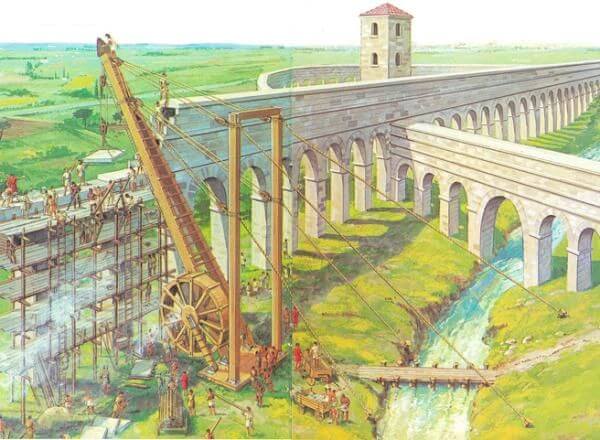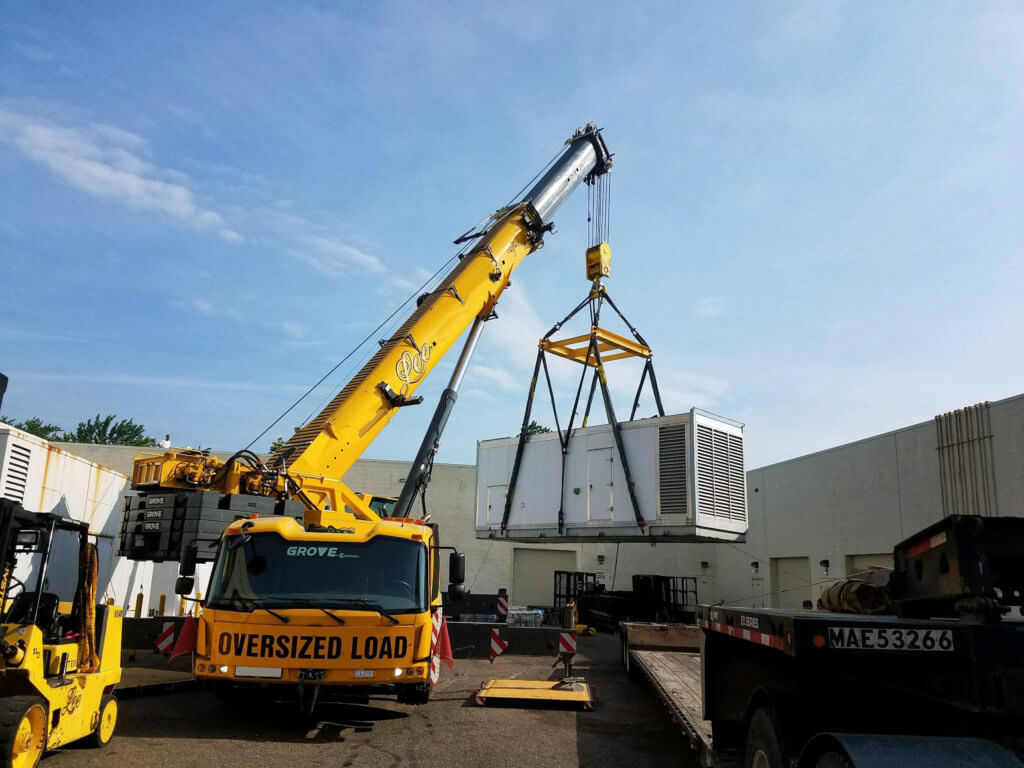For thousands of years, people have innovated ways to lift heavy objects and place them where they’re needed. As demonstrated at Stonehenge, the Pyramids of Giza, and countless ancient sites around the world, the history of the crane is closely aligned with the history of the limits of man’s strength. Ancient Greeks were miles ahead of the rest of the world when using lifting equipment. As early as 515 BC, distinctive cuttings for lifting tongs and lewis irons were discovered on stone blocks of Greek temples. These were the first blueprints for our modern cranes.
The History of The Crane
The concept of cranes originated from pulley systems that were first utilized by ancient Mesopotamians as early as 1500 BC. The first compound pulleys were created by Archimedes of Syracuse around 287 – 212 BC, which he used to lift an entire warship, along with its crew. A compound pulley has many advantages and pitfalls. A compound pulley system with five pulleys has a 5:1 advantage, meaning a man exerting a force of 50lbs, can pull 250lbs. The pitfalls include being stationary, immobile and have slow lifting speeds. These pitfalls led to the development of the winches and capstans used by the Romans to build temples. The power of circular rotation caught on quickly, which naturally led to the increased use of gear works and the development of cranes.

The earliest treadwheel appears in 1225. In the seas, the earliest harbor cranes were in use in 1244 in Utrecht while in England the treadwheel was recorded in 1331. At this time, cranes were used in harbors, mines and in building sites where the treadwheel crane had a major lifting role. The cranes were powered by windlasses that had radiating spokes and cranks. A single man operating a treadwheel crane has a mechanical advantage of 30:1. Treadwheel cranes were in use until the end of the 17th century and were essential at harbors and in cathedral construction.
The History of The Hydraulic Crane
While cranes remained hand-powered for centuries, hydraulic technology was developing. With a history that stretches back to Ancient Egypt, China, and Greece, water-powered machines (mostly water wheels) had been in use for thousands of years. Ancient irrigation systems, like the aqueducts developed by the Romans, relied on simple hydraulic technology, like siphoning.
But it was not until the 15th century that Blaise Pascal studied fluid hydrodynamics and hydrostatics, creating a new understanding of hydraulic principles like fluid density, pressure and incompressibility. He invented the hydraulic press which is the building block of modern hydraulics.
Much later in the 19th century, the rise of ironworks and industrialization meant that cranes were finally made with iron. The first cast iron crane was constructed in 1834. And in 1851, hand-powered cranes finally began running on steam power — the first step toward a truly hydraulic crane.
Modern Hydraulic Cranes

Today, hydraulic cranes are built with better specifications and materials than cranes in the 1800s but rely on the same mechanical and hydraulic principles developed centuries ago.
Modern hydraulic cranes are filled with an incompressible fluid, usually oil, that perfectly transfers pressure between pistons. Variations on this simple leveraging of fluid movement have allowed us to engineer large capacity cranes.
The Future of Cranes
In modern day, some mobile hydraulic cranes have a load capacity of up to 1,200 tons with a boom extending to 328 feet. While stationary cranes can have a much larger capacity, a mobile crane is beneficial for temporary construction. But what does the future of cranes look like? Certain companies are now developing remote monitoring and support. For remote monitoring, sensors are placed on the crane to collect data including running time, motor starts, work cycle and emergency stops. Remote support includes specialists ready to provide problem-solving and troubleshooting to reduce unexpected downtime.
Lee Contracting’s in-house equipment includes cranes with capacities up to 300 tons and gantries with capacities up to 1,200 tons.
Receive your free quote today or call us today at (888) 833-8776 to learn how we can complete your next industrial project.
Photo credit:
Coarelli, F. (2014, May). Rome and Environs. University of California Press. Retrieved July 12, 2019, from https://www.ucpress.edu/book/9780520282094/rome-and-environs


